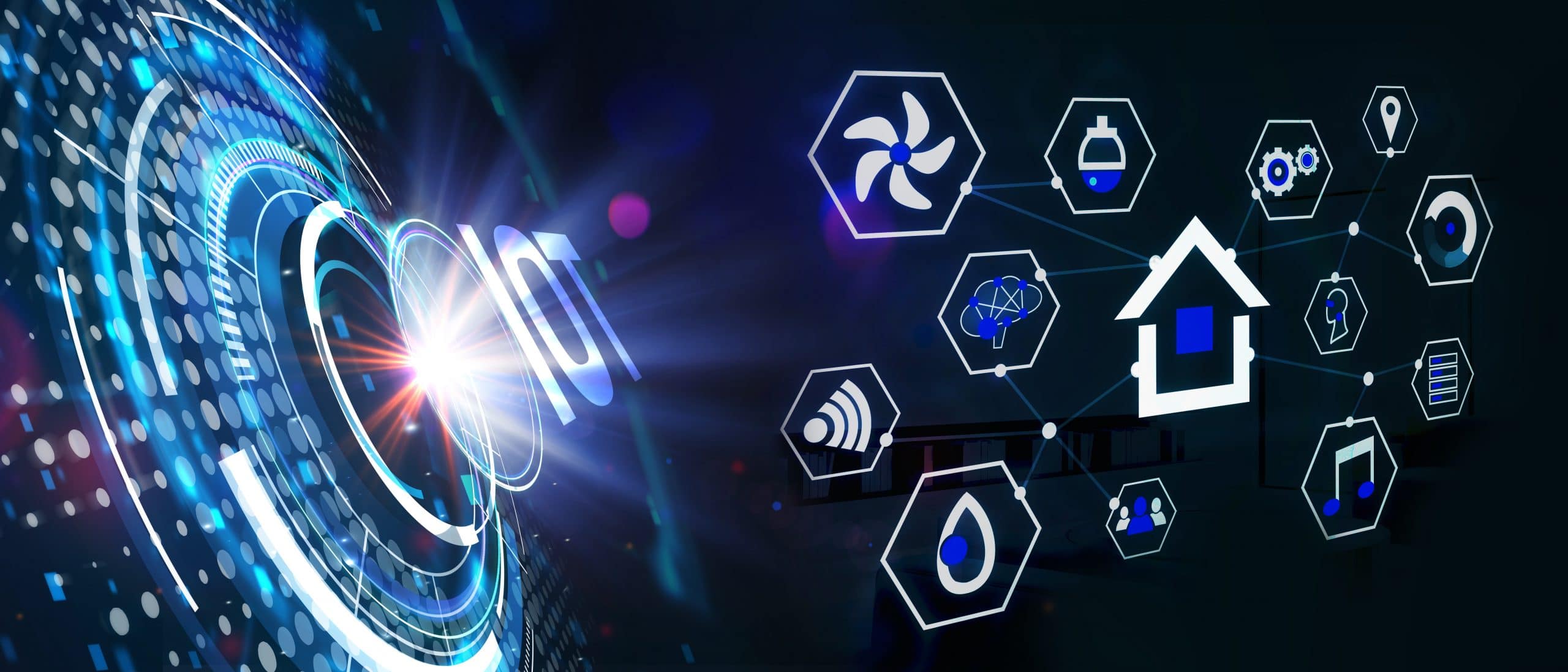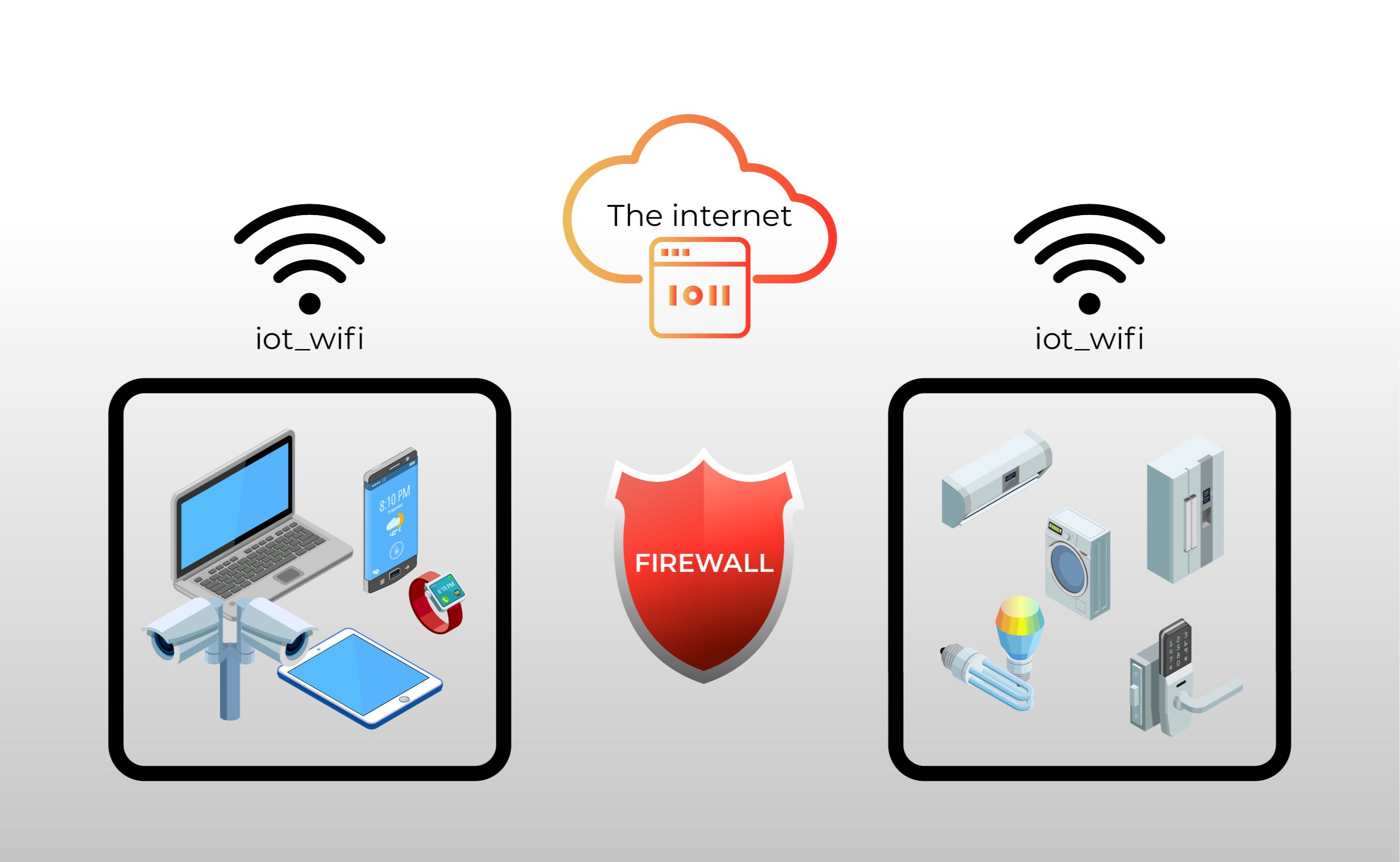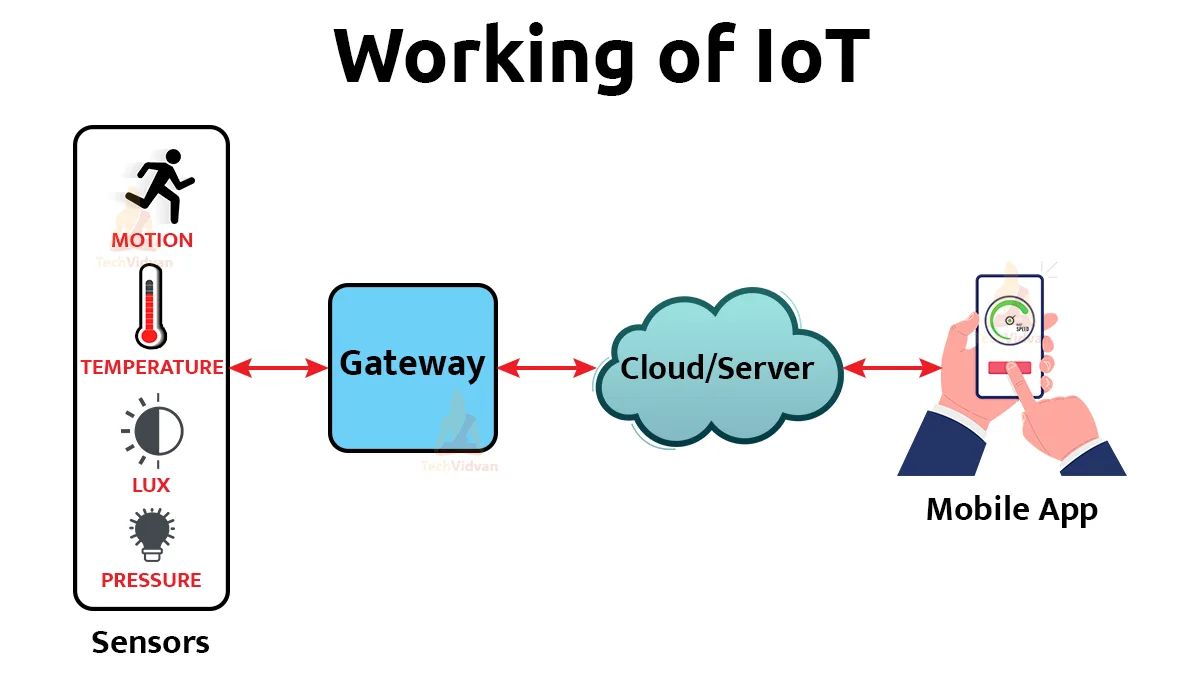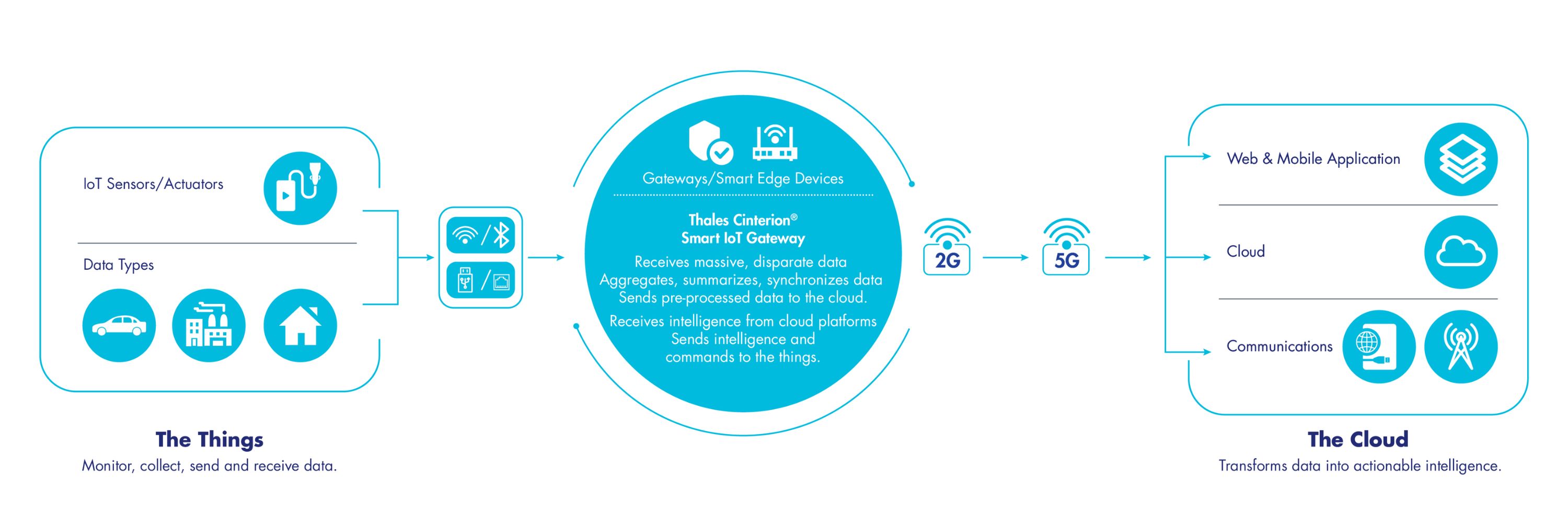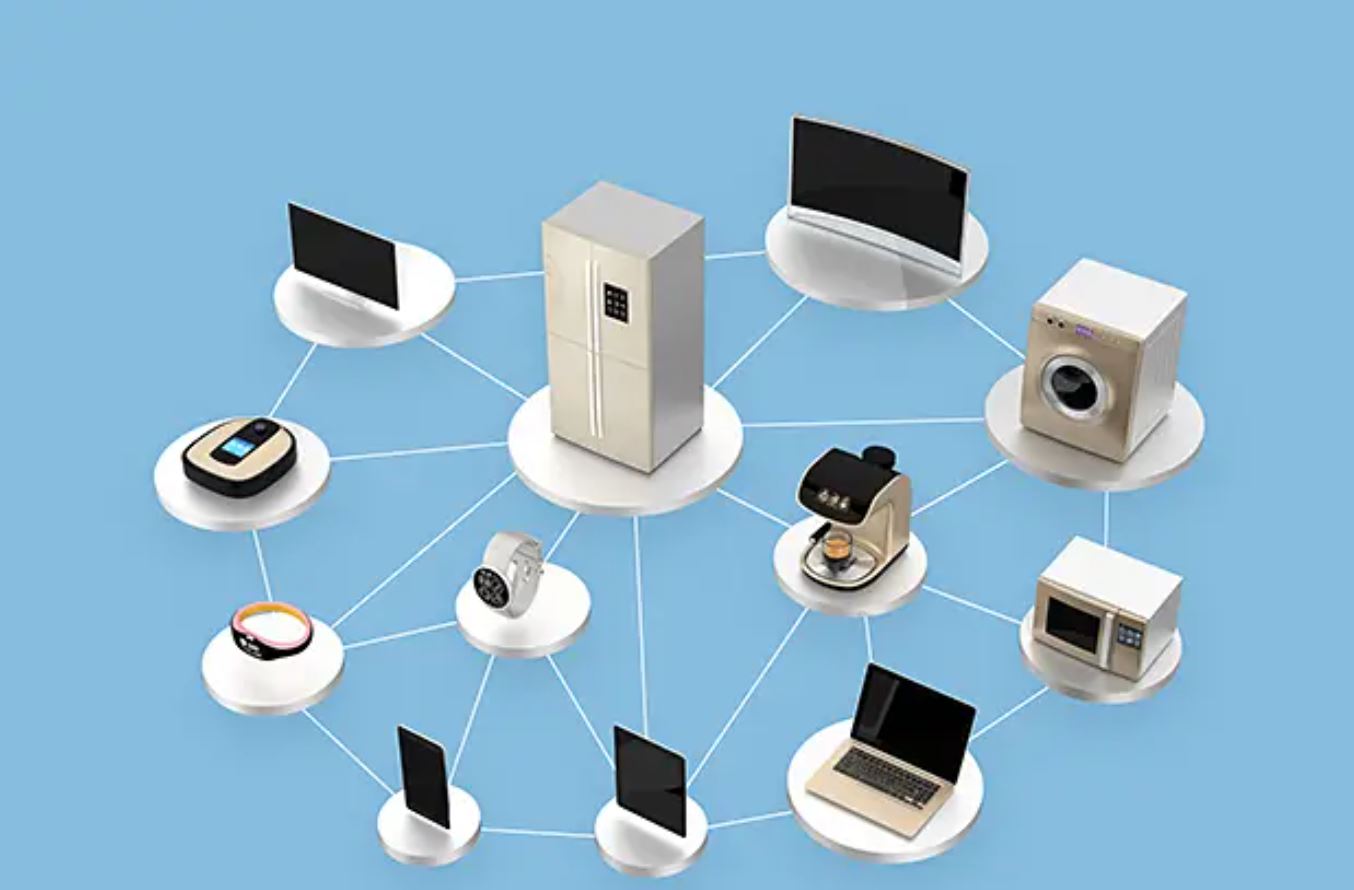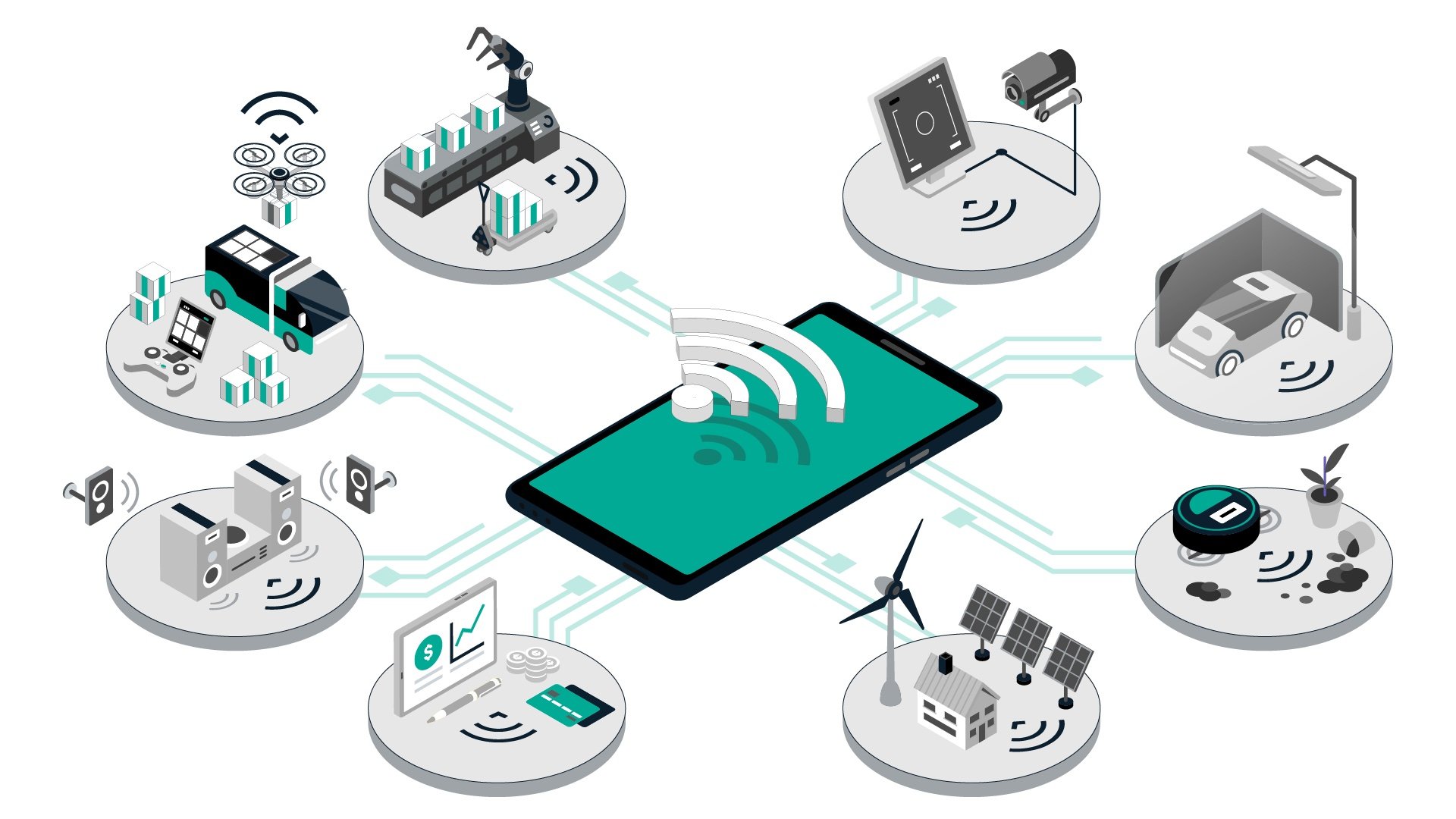Introduction
The Internet of Things (IoT) has revolutionized the way we live, work, and interact with the world around us. It has connected everyday objects, from household appliances to industrial equipment, to the internet, enabling them to communicate and share data with each other. This interconnected network of devices has opened up a world of possibilities and has the potential to transform various industries.
IoT devices rely on wireless communication to transmit information seamlessly. They utilize different communication protocols and models to establish connections and exchange data. Understanding how IoT devices communicate is crucial in leveraging their capabilities and addressing the challenges that come with this technology.
Wireless communication is the foundation of IoT connectivity. It allows devices to communicate over a network without the need for physical connections. Wi-Fi, Bluetooth, cellular networks, and other wireless technologies are commonly used for IoT communication. These wireless technologies provide flexibility, mobility, and scalability, enabling IoT devices to communicate in various environments and scenarios.
Protocols play a vital role in IoT communication. They define the rules and formats for data transmission, ensuring efficient and reliable communication between devices. Some common protocols used in IoT communication include MQTT (Message Queuing Telemetry Transport), CoAP (Constrained Application Protocol), and HTTP (Hypertext Transfer Protocol). These protocols provide different functionalities and are optimized for specific IoT use cases.
IoT devices can communicate using different models, depending on their requirements and capabilities. Peer-to-peer communication, where devices communicate directly with each other, is suitable for simple data exchange. In contrast, hub-and-spoke or star topologies involve a central device or hub that coordinates communication with multiple devices. Mesh networks facilitate communication between devices in a decentralized manner, offering redundancy and scalability.
The message format and payload used in IoT communication are essential for interoperability and efficient data exchange. JSON (JavaScript Object Notation) and XML (eXtensible Markup Language) are commonly used formats for structuring and representing IoT data. These formats allow for easy parsing and interpretation of data across different devices and platforms.
Ensuring the security of IoT communication is critical to protect sensitive data and prevent unauthorized access. Encryption, authentication, and access control mechanisms are essential in securing IoT devices and their communication channels. Additionally, regular software updates and vulnerability assessments help mitigate security risks in IoT deployments.
Despite the numerous benefits and advancements in IoT communication, there are still challenges that need to be addressed. Interoperability, scalability, and reliability are key areas that require further improvement. Additionally, managing the vast amount of data generated by IoT devices and ensuring privacy protection are ongoing challenges.
Looking into the future, advancements in 5G technology, edge computing, and artificial intelligence will pave the way for enhanced IoT communication capabilities. These developments will enable faster and more reliable communication, real-time data processing at the edge, and intelligent decision-making based on IoT data.
Wireless Communication
Wireless communication is the backbone of IoT connectivity, enabling devices to communicate and share data over a network without the need for physical connections. IoT devices utilize various wireless technologies to establish reliable and efficient communication links.
Wi-Fi is a commonly used wireless technology for IoT devices in indoor environments. It provides high-speed data transmission and is suitable for applications that require a stable and continuous connection. Wi-Fi enables seamless integration with existing networks, making it convenient for both residential and commercial IoT deployments.
Bluetooth is another popular wireless technology used in IoT communication, particularly for short-range connections. It is ideal for connecting peripherals, such as sensors, actuators, and wearable devices with a smartphone or gateway device. Bluetooth Low Energy (BLE) is an energy-efficient version of Bluetooth that is widely adopted in IoT applications due to its low power consumption.
Cellular networks, such as 3G, 4G, and now 5G, offer wide-area coverage and mobility for IoT devices. They enable devices to communicate over long distances and are particularly useful for applications that require IoT devices to be deployed in remote areas or on the move. Cellular networks provide reliable and secure connectivity, making them suitable for applications like asset tracking, fleet management, and smart city infrastructure.
In addition to these popular wireless technologies, there are other specialized wireless protocols designed specifically for IoT communication. Zigbee, for example, is a low-power, low-data-rate wireless protocol that is commonly used in home automation and industrial control systems. It enables devices to form a mesh network, allowing them to communicate with each other and extend the coverage area.
Another wireless technology gaining traction in IoT communication is LoRaWAN (Long Range Wide Area Network). LoRaWAN is designed for long-range, low-power IoT applications and offers good coverage even in challenging environments. It is well-suited for applications such as smart agriculture, smart metering, and asset tracking.
Overall, wireless communication is a crucial component of IoT connectivity. It provides the flexibility, mobility, and scalability needed to connect a wide range of devices and enable seamless data exchange. As technology continues to advance, new wireless technologies and communication standards will emerge, further enhancing the connectivity options available for IoT devices.
Protocols for IoT Devices
Protocols play a critical role in enabling communication and data exchange between IoT devices. They define the rules and formats for transmitting information, ensuring interoperability and efficient data transfer. Several protocols have been developed specifically for IoT communication, each with its own strengths and areas of application.
MQTT (Message Queuing Telemetry Transport) is a lightweight publish/subscribe-based messaging protocol widely used in IoT deployments. It is known for its simplicity and low overhead, making it ideal for resource-constrained devices. MQTT operates on a publish/subscribe model, where devices publish data to specific topics, and other devices subscribe to those topics to receive the data. It enables efficient and scalable communication in IoT environments.
CoAP (Constrained Application Protocol) is another protocol designed for IoT devices with limited resources. It is built on top of HTTP and is specifically optimized for constrained networks and low-power devices. CoAP supports both UDP and TCP as transport protocols and provides lightweight communication functionalities, making it suitable for IoT applications where energy efficiency and bandwidth optimization are essential.
HTTP (Hypertext Transfer Protocol) is a widely used protocol in web communication and has also found its place in IoT. It allows devices to send requests and receive responses over the internet. HTTP is relatively easy to implement and provides reliable and robust communication. However, its high overhead may make it less suitable for resource-constrained IoT devices.
AMQP (Advanced Message Queuing Protocol) is a protocol that enables reliable and secure message-oriented communication between IoT devices. It supports both publish/subscribe and message queuing functionalities, allowing for flexible and efficient data exchange. AMQP is suitable for scenarios where guaranteed delivery, message persistence, and complex routing are required.
DDS (Data Distribution Service) is a real-time publish/subscribe protocol used in mission-critical IoT applications. It provides reliable data exchange with low latency and high throughput. DDS supports efficient data filtering, quality of service mechanisms, and data-centric messaging, making it well-suited for applications that require high-speed data processing and real-time control.
These protocols serve different purposes and cater to specific requirements of IoT applications. The choice of protocol depends on factors such as device capabilities, network constraints, scalability, and security requirements. In some cases, multiple protocols may be used in an IoT system to handle different aspects of communication and data exchange.
Standardization efforts play an important role in ensuring interoperability among different IoT devices and platforms. Organizations like the Internet Engineering Task Force (IETF), the Open Connectivity Foundation (OCF), and the Industrial Internet Consortium (IIC) work towards defining and improving IoT protocols, ensuring seamless communication across diverse IoT ecosystems.
As the IoT continues to grow and evolve, new protocols and enhancements to existing ones are expected to emerge. These advancements will further improve the efficiency, security, and reliability of IoT communication, enabling a more connected and interoperable world.
Communication Models for IoT Devices
IoT devices utilize various communication models to establish connections and exchange data in an efficient and scalable manner. These communication models define how devices interact and coordinate with each other to achieve specific objectives. Understanding the different communication models is essential for designing and deploying IoT systems effectively.
One common communication model used in IoT is the peer-to-peer model, where devices communicate directly with each other. In this model, devices can establish connections and exchange data without the need for a central coordinating entity. Peer-to-peer communication is suitable for scenarios where devices have similar capabilities and need to transfer information in a straightforward manner. For example, in a home automation system, smart light bulbs can directly communicate with a smart thermostat to coordinate the room temperature and lighting settings.
Another widely used communication model in IoT is the hub-and-spoke or star topology. In this model, there is a central device or hub that acts as a coordinator and facilitates communication between multiple devices. Each device in the network communicates with the hub, which then relays the information to the appropriate devices as needed. This model is commonly used in applications where devices have varying capabilities and the hub provides centralized control and coordination. An example of this is a smart home system where a central hub connects and controls various smart devices, such as door locks, cameras, and thermostats.
Mesh networking is another communication model used in IoT, particularly for large-scale deployments. In a mesh network, devices communicate with each other directly, forming a decentralized network. This model offers redundancy and scalability, as messages can be routed through multiple paths if one device or communication link becomes unavailable. Mesh networks are well-suited for applications that require robust and reliable communication, such as industrial IoT systems or smart city infrastructure.
Hybrid communication models are also possible in IoT, where different communication models are combined to meet specific requirements. For example, a hybrid model could involve a combination of peer-to-peer and hub-and-spoke communication within the same IoT system. This allows for flexible and optimized communication based on the capabilities and needs of the devices involved.
The choice of communication model depends on factors such as the number and capabilities of devices, the required level of coordination, scalability requirements, network constraints, and application-specific considerations. Different communication models offer different trade-offs in terms of complexity, scalability, and efficiency, and it’s important to select the most suitable model for each IoT deployment.
As IoT technology continues to evolve, new communication models and hybrid approaches are expected to emerge. These advancements will enable more sophisticated and adaptive communication architectures, further enhancing the capabilities of IoT systems.
Message Formats and Payloads
Message formats and payloads play a crucial role in IoT communication, as they determine how data is structured, transmitted, and interpreted by devices. The choice of message format and payload format depends on factors such as the type of data being exchanged, interoperability requirements, and the capabilities of the devices involved.
JSON (JavaScript Object Notation) is a widely used message format in IoT communication. It is a lightweight, human-readable format that is easy to parse and interpret by both humans and machines. JSON allows for hierarchical data structures and supports a variety of data types, making it versatile for representing complex IoT data. Many programming languages provide built-in support for JSON, making it convenient for developers.
XML (eXtensible Markup Language) is another popular message format used in IoT, particularly in industries such as manufacturing and healthcare. XML uses tags and attributes to structure data and provides a standardized way to describe data types and relationships. It offers flexibility and extensibility, allowing for complex data modeling and integration with existing data systems. However, XML has a higher overhead compared to JSON, making it less suitable for resource-constrained IoT devices.
Protocol Buffers, also known as protobuf, is a binary message format originally developed by Google. It provides a compact representation of structured data and is highly efficient in terms of both size and processing speed. Protocol Buffers offer language and platform independence, enabling seamless communication between devices with different programming languages.
Message payloads contain the actual data being transmitted in IoT communication. The payload format can vary depending on the use case and the specific data being exchanged. For example, in a temperature monitoring application, the payload may consist of a single value representing the current temperature. In a more complex scenario, the payload could include multiple data points, timestamps, and additional metadata.
Binary payloads are often used for efficient transmission of data, especially in situations where bandwidth or power constraints exist. Binary payloads involve encoding data in binary format, which reduces the size of the message and minimizes processing overhead. This is particularly relevant in resource-constrained IoT devices that have limited memory and processing capabilities.
Standardization initiatives, such as the OMA Lightweight M2M (LwM2M) protocol, aim to define common message formats and payloads for IoT communication. These standards promote interoperability and allow devices from different manufacturers and platforms to communicate seamlessly.
As the IoT continues to evolve, new message formats and payload formats may emerge to address specific needs and use cases. Additionally, the integration of IoT with emerging technologies, such as artificial intelligence and machine learning, may require the development of new message formats and payload structures to accommodate advanced data analytics and processing.
Security Considerations in IoT Communication
Security is a critical consideration in IoT communication due to the sensitive nature of the data being exchanged and the potential impact of security breaches. IoT systems face unique challenges when it comes to security, as they involve a network of interconnected devices with varying levels of vulnerability. It is crucial to implement robust security measures to protect IoT devices and ensure the integrity, confidentiality, and availability of data.
Encryption is a fundamental security measure in IoT communication. It ensures that data transmitted between devices or from a device to a cloud platform is securely encrypted, preventing unauthorized access and tampering. Common encryption protocols used in IoT include Secure Sockets Layer (SSL), Transport Layer Security (TLS), and Advanced Encryption Standard (AES). Encryption algorithms provide secure key exchange and data encryption to protect the confidentiality and integrity of data.
Authentication mechanisms are essential in ensuring that only authorized devices can communicate within an IoT system. Strong authentication protocols and techniques, such as digital certificates, tokens, or biometrics, are used to verify the identity of devices and establish trust. Mutual authentication, where both the device and the server authenticate each other, adds an extra layer of security to prevent impersonation attacks.
Access control is another vital aspect of IoT communication security. Proper access controls should be implemented to ensure that only authorized users or devices can access and interact with IoT devices or data. Access control mechanisms can include role-based access control (RBAC), fine-grained access control policies, and device-specific access permissions.
Regular software updates are crucial for maintaining the security of IoT devices. Manufacturers should provide timely updates and patches to address vulnerabilities and bugs that may arise over time. Likewise, users and organizations must ensure that they keep their devices and software up to date with the latest security patches.
Physical security measures should not be overlooked in IoT communication. Implementing measures to physically secure devices and prevent unauthorized physical access is essential to protect against tampering and unauthorized retrieval of sensitive data.
Privacy considerations are also vital in IoT communication. As IoT devices collect and transmit vast amounts of data, ensuring the privacy of individuals and their personal information becomes critical. Organizations must adhere to privacy regulations and implement appropriate anonymization techniques, data masking, and consent mechanisms to safeguard user privacy.
Regular security audits and vulnerability assessments should be conducted to identify and mitigate potential security risks in IoT systems. Penetration testing, code review, and vulnerability scanning help identify vulnerabilities and weaknesses in IoT devices, communication channels, and cloud platforms.
IoT security is an ongoing challenge, and the landscape is constantly evolving. Keeping up with the latest security standards, implementing strong encryption, authentication, access control measures, and regularly updating devices and software are essential for ensuring the security of IoT communication.
Challenges in IoT Communication
While IoT communication offers tremendous potential, it also comes with its fair share of challenges that need to be addressed for the technology to reach its full potential. These challenges span various areas, including interoperability, scalability, reliability, and the management of vast amounts of data generated by IoT devices.
Interoperability is a significant challenge in IoT communication, as devices and systems from different manufacturers may use different communication protocols and standards. Ensuring seamless communication between devices and platforms requires standardization efforts and the development of protocols that support interoperability across diverse IoT ecosystems.
Scalability is another challenge in IoT communication, particularly when dealing with a rapidly growing number of connected devices. As more devices join an IoT network, the system should be able to handle the increased communication traffic and data volume efficiently. This requires robust network infrastructure and protocols that can scale seamlessly.
Reliability of communication is crucial for IoT applications, especially in mission-critical scenarios. Inconsistencies in connectivity or communication failures can have severe consequences, such as disruptions in industrial processes or public safety issues. Ensuring reliable and uninterrupted communication in challenging environments, including remote or harsh conditions, requires the development of resilient communication protocols and infrastructure.
Managing the vast amount of data generated by IoT devices presents a significant challenge. IoT devices generate massive volumes of data that need to be collected, processed, and analyzed in real-time. Extracting actionable insights from this data requires efficient data management techniques, including edge computing, data filtering, and data analytics algorithms.
Security and privacy are ongoing challenges in IoT communication. With the increasing interconnectedness of devices, the risk of cyberattacks and data breaches becomes more significant. IoT devices can be vulnerable to various security threats, including unauthorized access, data alteration, and distributed denial-of-service (DDoS) attacks. Implementing robust security measures and privacy safeguards is essential to protect IoT systems and the sensitive data they handle.
Power consumption is a concern, especially for resource-constrained IoT devices that run on batteries or have limited power sources. Wireless communication and data transmission can consume significant amounts of energy, impacting the overall battery life of these devices. Optimizing power consumption through efficient communication protocols and energy-efficient hardware designs is crucial for extending the lifespan of IoT devices.
Lastly, the complexity of IoT communication systems also poses challenges in terms of deployment, maintenance, and management. The integration and configuration of diverse devices, platforms, and protocols require specialized knowledge and expertise. Ensuring smooth operation, monitoring, and troubleshooting can be complex, requiring robust management systems and tools.
Addressing these challenges is crucial for unlocking the full potential of IoT communication. As technology advances, ongoing research and development efforts, standardization initiatives, and collaboration between stakeholders will help overcome these obstacles and drive the future of IoT communication.
Future Trends in IoT Communication
The field of IoT communication is rapidly evolving, and several exciting trends are shaping the future of this technology. These trends include advancements in wireless connectivity, edge computing, artificial intelligence, and the emergence of new communication protocols.
One significant trend in IoT communication is the development and adoption of 5G wireless technology. 5G offers significantly faster speeds, lower latency, and higher capacity compared to previous wireless technologies. This ultra-fast and reliable connectivity will enable real-time IoT applications such as autonomous vehicles, smart cities, and remote healthcare, where immediate data transfer and response are critical.
Edge computing is another emerging trend in IoT communication. Edge computing involves processing and analyzing data closer to the source, at the edge of the network, rather than sending it to a central cloud server. This localized data processing reduces latency and allows for real-time decision-making based on IoT data. Edge computing is particularly useful in applications that require immediate response, such as industrial automation, and in scenarios where limited bandwidth or intermittent connectivity exists.
Artificial intelligence (AI) is playing a significant role in shaping the future of IoT communication. AI algorithms can analyze and make sense of massive amounts of IoT data, enabling intelligent decision-making and automation. AI-powered analytics can help in predicting and preventing system failures, optimizing energy usage, and identifying patterns or anomalies in IoT data. AI also enables advancements in natural language processing and voice recognition, enhancing user interfaces and interaction with IoT devices.
The emergence of new communication protocols is also a trend to watch in IoT. As IoT ecosystems expand, there is a need for communication protocols that cater to specific use cases and address the unique requirements of various industries. Protocols such as OPC-UA (Object Linking and Embedding for Process Control – Unified Architecture) and Thread are gaining momentum in industrial IoT and smart home sectors, offering secure and efficient communication protocols for specialized applications.
Standardization initiatives will continue to play a crucial role in shaping the future of IoT communication. Organizations such as the Internet Engineering Task Force (IETF), the Industrial Internet Consortium (IIC), and the Open Connectivity Foundation (OCF) are working towards defining and improving standards for IoT communication. These standards ensure interoperability, security, and scalability across diverse IoT ecosystems, enabling seamless communication between devices and platforms.
The integration of blockchain technology with IoT communication is another emerging trend. Blockchain provides a decentralized and secure framework for data storage and transactions, offering enhanced trust and transparency in IoT networks. It has the potential to enable secure and tamper-proof communication, secure data sharing, and enable new business models in IoT deployments.
As IoT technology continues to advance, the convergence of these trends will shape the future of IoT communication. The combination of fast and reliable wireless connectivity, localized edge computing, AI analytics, specialized communication protocols, and secure frameworks will pave the way for new applications and opportunities across industries.







